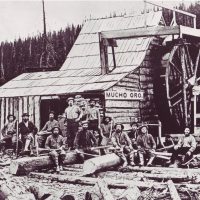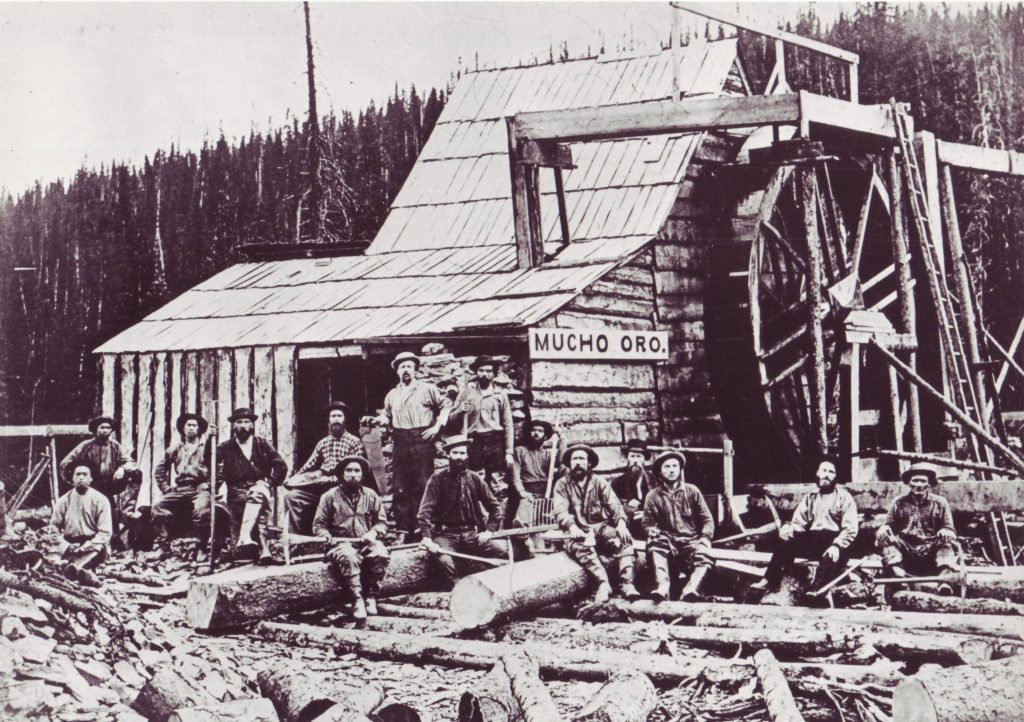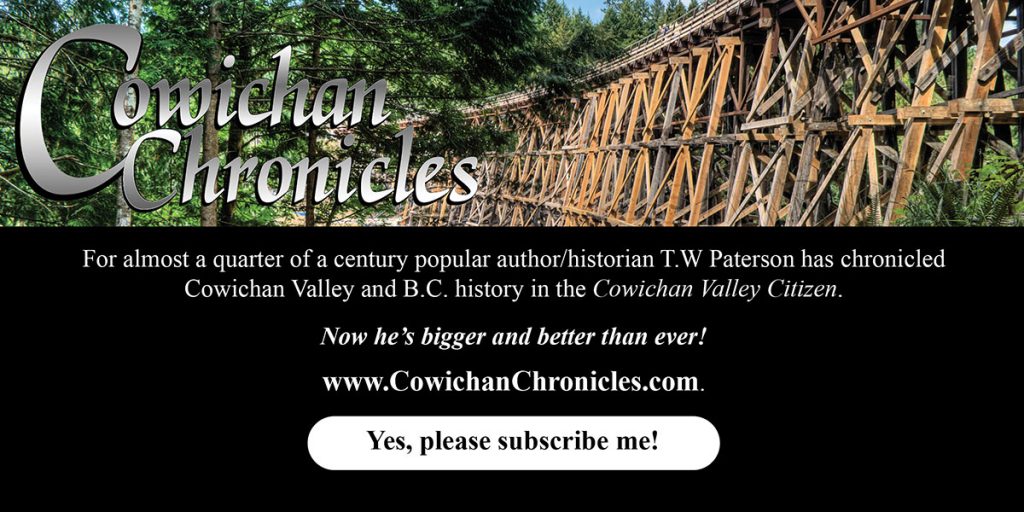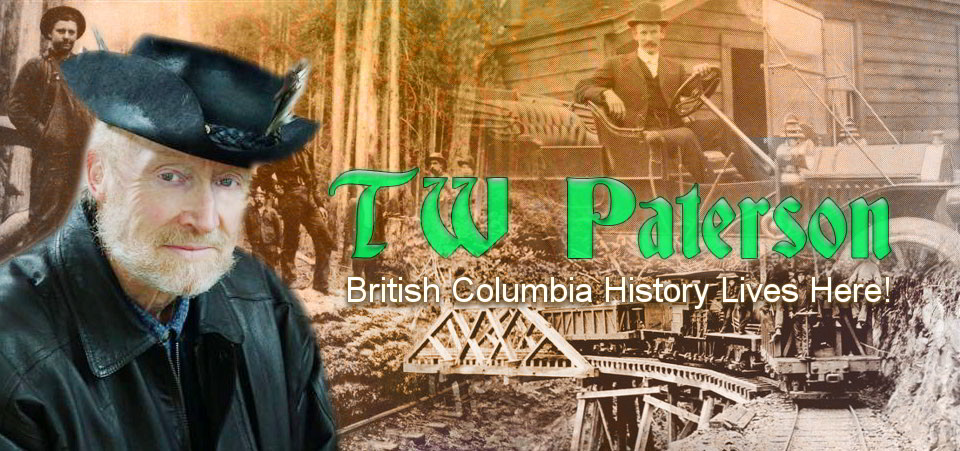Deathbed Promise Made History

The story of Cariboo’ John Cameron, more than a century and a half later, remains every bit as fascinating and is so much bigger-than-life that it bears repeating.
Almost unusual in the B.C. goldfields in that he was a Canadian, this descendant of Scottish United Empire Loyalists who’d moved north during the American war for independence, John Cameron was 25-years-old when he left the family farm near Glengarry, Ontario (Canada West as it was then) in 1852.
With his brother Alan, he joined in the California gold rush and, six years later, Cameron and two brothers came north to seek their fortunes on the Fraser River. John did well enough, as much as $20,000, that he returned home and married Sophia Groves, his childhood sweetheart.
With Sophia and year-old daughter Alice, he again headed west, this time drawn by breathless reports of rich new strikes in the Cariboo.
Late in February 1862, after an arduous trip via the Isthmus of Panama and San Francisco, they arrived in Victoria where, weakened by their long journey, Alice died. The broken hearted parents carried on to Antler, then to upper Williams Creek, where Cameron staked a claim.

Ned Stout’s discovery of gold below the canyon changed everything. With five partners, including Sophia, John Cameron moved downstream, choosing several claims half a mile below those of the Billy Barker company. Old friend Robert Stevenson joined them with his claim and after some dispute it was agreed to follow Cameron’s urging in risking all on two adjoining claims, to be known as the Cameron, on the west side of the creek.
By the winter of 1863 things were not going well. The partners had little to show for their efforts and were seriously wondering if they’d made a mistake. Personal tragedy again struck the Camerons when Sophia gave birth to second, stillborn child. When she caught typhoid there was little that the single doctor in the gold camp could do and she died on the 22nd of October.
Thrice-stricken, John Cameron was heartbroken. He resolved to honour Sophia’s wish to be buried back home in Ontario but, for the immediate term, placed her body, immersed in alcohol, inside a tin casket within a wooden coffin and buried beneath the floor of an abandoned cabin. He then returned to work. When two partners, discouraged, pulled out, he and the others hired a professional miner named Bill Halpenny and a crew to carry on in the frozen earth. Three days before Christmas, their gamble paid off when they struck rich gold-bearing gravel at 22 feet.
Within a month John Cameron, by now ‘Cariboo’ John Cameron, was rich–rich enough to hire a crew to help him and Robert Stevenson carry Sophia’s body to Victoria.
It was yet mid-winter, with temperatures dipping almost 30 degrees F below zero, but 22 unemployed miners applied for the $12 per diem and bonus of $2000 upon their arrival at Victoria. Not one of them collected the bonus, just Cameron, Stevenson and Sophia making it to Port Douglas to board a steamer for Victoria.
Legend has forgotten the hired help, selectively recalling that a die-hard John Cameron and faithful friend Robert Stevenson battled their way, unaided, through blizzards and snowdrifts with Sophia’s casket on a sled. Whatever the case, they made it to Victoria in March ‘63, where Cameron had Sophia interred. That done, if but temporarily, he returned his attention to mining by buying out two partners and acquiring two adjoining claims before heading back to Williams Creek.
All that summer, crews of miners hauled out the gold in buckets and a town–Cameronton– sprang up on the neighbouring flats.
‘Cariboo’ John Cameron was rich beyond his fondest dreams, with gold and shares that, in today’s values, amounted to something in the order of $5 million. True to his promise to Sophia, he escorted her home for what he thought would be her last burial.
He gave $100,000 to his five brothers, throwing in a farm each for the two who’d accompanied him to the Cariboo, established an educational fund at Queen’s University for younger Camerons, was generous with his friends, built a mansion, invested in a canal scheme and mining properties in eastern Canada, and remarried.
His fall from fortune and grace is almost as incredible as his success. Ugly rumours spread that he’d brought home a coffin filled with gold, having sold Sophia to ‘an Indian chief’ to raise operating capital. A libellous account in an American newspaper of her escaping bondage and returning to Cornwall was the final straw. At great pain to himself and to his former in-laws, Cameron put the rumours to rest by having Sophia exhumed. Her features, preserved by the alcohol, were yet recognizable.
After losing what remained of his fortune to bad investments, John Cameron returned to the Cariboo with his second wife in hopes of again making a strike. Instead, he dropped dead of a massive stroke and was buried in Barkerville’s picturesque cemetery–the cemetery he, ‘Cariboo’ John Cameron had laid out a quarter of a century before.


He was a relative of mine,He never left me a penny lol.
Nor I, Stewart.
Good story. John Cameron may be an old ancestor of my mother’s family from Ontario of the early 1800
A neat ancestor to have, Allan, although I wouldn’t object if I learned my great great grandfather was hanged for horse theft. You know, “colour.”
GREAT
Steve Burnet…… Robert Stevenson, my great grandfather, eventually bought a large piece of land and farmed in Sardis, BC. That land is now covered by residential properties and Stevenson Road is a main thoroughfare.
I’m glad he’s honoured with a road named after him, Steve.